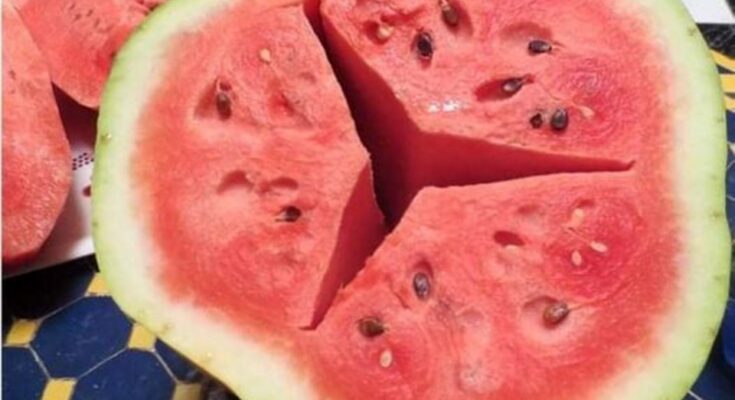The most popular seasonal fruit is melon. Melons are loved by both children and adults, and because they are high in water and help to hydrate the body, they are even suggested during the summer.
Because we cannot tell if a watermelon is ideal without cutting it, it is crucial to be aware of a few key factors before purchasing one.
How to pick a good watermelon
The tail’s form, look, and color are some of the most crucial elements. Watermelon must first be hefty. Watermelon is nice when you pick it up and discover that it is harder than it first appeared to be.

Watch out for the melon spot. This stain shows whether or not the watermelon is ripe. So, search for the yellow patch on the tail’s opposite side. The watermelon is not ripe enough if that stain is green or white. The shell also needs to be shiny.
You can tap the watermelon with your fingertips to see if it is ripe as well. The feathers are perfectly fine to consume if they sound empty. Avoid watermelons with an uneven shape and look for those that are round or oval instead!
Why not eat cracked melons in the middle
Every household makes an effort to eat a diet rich in wholesome fruits and vegetables. Because of this, it’s critical to understand how to differentiate between crops that are cultivated naturally and those that use chemical fertilizers.
Using accelerators, several farmers are attempting to hasten the growth of melons. The crack in the center of the core is one indication that a melon was grown synthetically.
If there is a fracture like that, chemical fertilizers are likely used throughout the watermelon’s growth.
The benefits of eating watermelon
The body can benefit greatly from both the watermelon’s fruit and seeds. As a result, save the watermelon seeds because they are packed with nutrients. 30.6 grams of protein, or 61% of the daily required amount, are available in 150 grams of dry seeds.
Thus, tryptophan, glutamic acid, and lysine are among the essential amino acids found in seed proteins. Additionally, arginine is present, which has the ability to control blood pressure and ease the suffering of narrow arteries.
Niacin, a B vitamin that is crucial for the preservation of the brain system, digestive system, and skin suppleness, is also present in watermelon seeds. Vitamins including thiamine, riboflavin, vitamin B6, and pantothenic acid are also present in the seeds.
Consuming minerals including magnesium, phosphorus, iron, potassium, sodium, copper, manganese, and zinc, which support muscles and joints, is another advantage of eating watermelon seeds.
The melon core has a very low fat and cholesterol content. Citrulline, which is mostly present in peels, aids in the liver’s ability to eliminate ammonia. Additionally, citrulline boosts energy levels, relaxes blood vessels, and lessens oxidative stress.
The melon core also has pantothenic acid, iron, calcium, magnesium, potassium, phosphorus, zinc, and selenium in addition to vitamins A, C, D, E, B6, and B12. The immune system is strengthened by vitamins and antioxidants, which also help prevent heart disease, joint inflammation, and several cancers, including colon, prostate, breast, and cervical cancer.
Lycopene, a potent antioxidant that lowers bad cholesterol and guards against cardiovascular disease, cataracts, and osteoporosis, is found in hi



